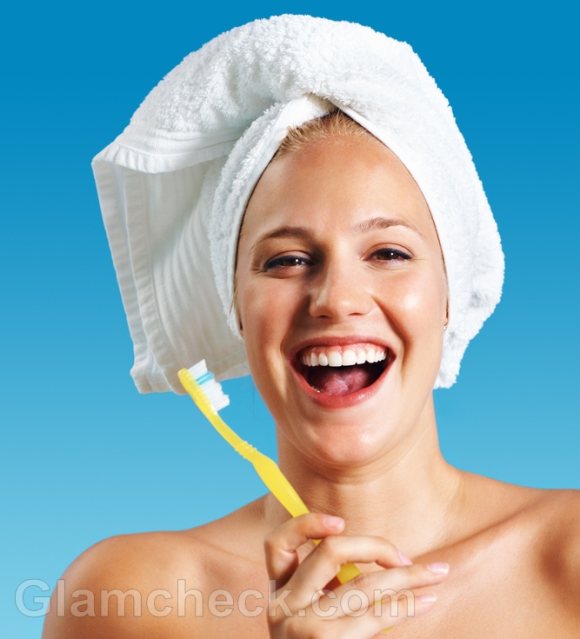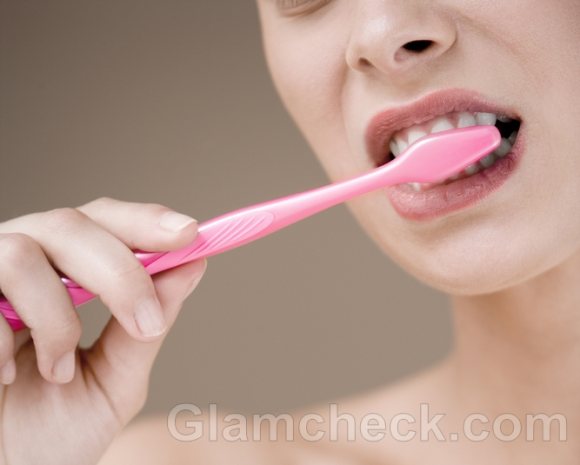Everyone desires shiny, white, pearly teeth but it eludes all those who only desire and do nothing more. A good oral hygiene routine of brushing and flossing everyday greatly helps in the process of acquiring and maintaining a beautiful set of teeth and a charming smile. Brushing should not taken lightly and it should be done in the proper manner to produce the desired effects. In a sense, proper brushing of teeth is an art in itself, but it can be learned easily if the interest and the conviction to improve one’s oral hygiene is strongly felt. Now we come to the million dollar question – How to brush your teeth properly? Several easy and simple components of brushing, if followed regularly, can bring about a marked change in the quality of brushing.
Children should be taught how to brush properly and take care of their teeth and gums early in their childhood so that the importance of oral hygiene is inculcated at an early age itself.
Why Brush? – The Double Threat of Plaque and Tartar
 Oral hygiene is very crucial of one’s overall health and well being and hence should be accorded paramount importance. One of the foundations of hale oral hygiene is brushing the teeth. Brushing is the first line of extrinsic defense we apply to get rid of germs that are capable of damaging the teeth and cause several other related oral problems. Given the value of maintaining good oral hygiene, learning how to brush your teeth is of utmost importance.
Oral hygiene is very crucial of one’s overall health and well being and hence should be accorded paramount importance. One of the foundations of hale oral hygiene is brushing the teeth. Brushing is the first line of extrinsic defense we apply to get rid of germs that are capable of damaging the teeth and cause several other related oral problems. Given the value of maintaining good oral hygiene, learning how to brush your teeth is of utmost importance.
The oral cavity is a thriving base for bacterial growth given the temperature and that the food is available in constant supply for the bacterial colonies. It is important we get rid of these colonies before they are able to cause extensive damage to the teeth and gums. If left uncared for, the acid producing bacteria are capable of eating into the tooth through its various layers and cause tooth decay. Plaque, tartar and eventually tooth decay follows if the teeth are left unattended. It does not affect only the teeth, the gums are equally affected by this. Gingivitis and Periodontitis may be caused due to the lack of oral hygiene and more specifically, due to improper or inadequate brushing.
Plaque refers to the layer that accumulates on the tooth surface naturally, everyday. It is composed of the bacteria naturally present in the mouth and the sugars from the food that is consumed. The bacteria respire anaerobically, thereby releasing acids as a by product of respiration directly on the tooth surface. If these acid secreting bacteria are not removed regularly and thoroughly, the acid seeps deep into the tooth causing extensive damage.
When left there to stay on the teeth, the plaque hardens resulting in the formation of tartar or calculus which can move below the gumline and irritate the gums as well. Plaque and tartar lead to several other complications such as cavities, tooth decay and gum disease. It is important to learn how to brush your teeth properly to avoid any painful complications at a later stage.
Choosing the Correct Toothbrush
- The first step in proper brushing is to select the appropriate toothbrush. Several types and sizes of toothbrush are available in the market today giving us immense scope for choice.
- Go for soft bristled brushes as they cause minimum or no damage to the gums and also result in effective plaque removal.
- Brushes that have a flexible and narrow head have impressive navigational abilities and reach into the corners of the mouth to remove the debris that may be caught in between the pre-molars or the molars.
- Choose the brush with a handle that is most comfortable for you. Brushes today ,come with anti slip and grip handles to ensure effective handling.
- Powered brushes are great but the conventional ones are effective as well. Pick the one that suits your needs.
- Toothbrushes have to be replaced at least once in every four or five months. Brushes with indicator bristles are available in the market in which the colored bristles fade over time and indicate when the brushes need to be replaced.
The Essentials on How to Brush Your Teeth Properly
 It is important that we brush twice daily, once in the morning to remove the plaque that has accumulated overnight and one at night, before going to bed to remove all the left over food particles that serve as an effective substratum for germ growth.
It is important that we brush twice daily, once in the morning to remove the plaque that has accumulated overnight and one at night, before going to bed to remove all the left over food particles that serve as an effective substratum for germ growth.
Brushing, to effective, should be done for at least two minutes. While brushing, all sides of the mouth should be covered and care should be taken to brush the teeth at the back of the mouth as well as the inner portion of the visible ones as well.
Choice of toothpaste is equally important. Use toothpaste with fluoride that helps to protect and harden the tooth’s enamel. Several toothpastes for specific dental needs are available in the market, like tartar control toothpaste, sensitivity relief as well as whitening toothpastes.
Learn how to brush your teeth properly with this easy step to step guide.
- Always start with the teeth at the back. The molar and pre-molars of the upper jaw should be the one’s that the brush touches the first.
- From there, move in a clockwise direction to cover the rest of the teeth. Take time to cover the teeth properly and do not rush and move over to the adjacent teeth in a hurry.
- Hold the brush at a 45 degree angle as you proceed towards the front teeth, that is, from the pre-molars to the canines and incisors. Here, you need to position your brush at the gumline in the 45 degree angle and move in short swift strokes away from the gumline to remove the plaque accumulated on the tooth’s outer surface.
- Brush the outer, visible side of the front teeth, the incisors, and then move into the inner, invisible side of these teeth. To brush the inner sides of the teeth, use the tip of the bristles and make short brisk strokes to cover the surface of the tooth from the gumline to the tip.
- While brushing the outer surface, use circular motion to ensure effective coverage of the entire surface.
- Brush the chewing surfaces of the pre-molars and molars on both the jaws thoroughly using flat strokes.
- The tongue is an essential component of the oral cavity and should not be ignored. Remember to brush the surface of the tongue to remove the accumulated white layer. This helps to remove the layer that acts as the base for bacterial growth that causes bad breath.
- As a finishing touch, brush the insides of the cheek gently.
- Rinse the mouth thoroughly with water to remove any traces of toothpaste that may be left behind.
When followed properly, brushing helps in the elimination of the disease causing bacteria from the oral cavity, protect the oral cavity from any disease or discomfort, keeps your gums healthy and freshens the breath. These steps need not be followed in the same sequence as mentioned. Changes in the order may be made to suit one’s comfort, but all the steps need to be followed so that the entire inner and outer surfaces of the teeth are covered for effective germ removal.
Image: Shutterstock
